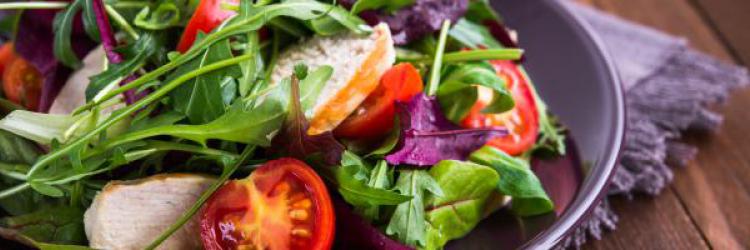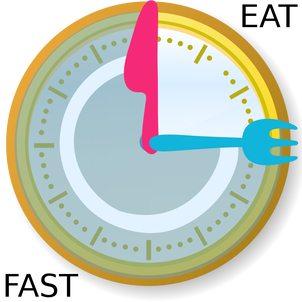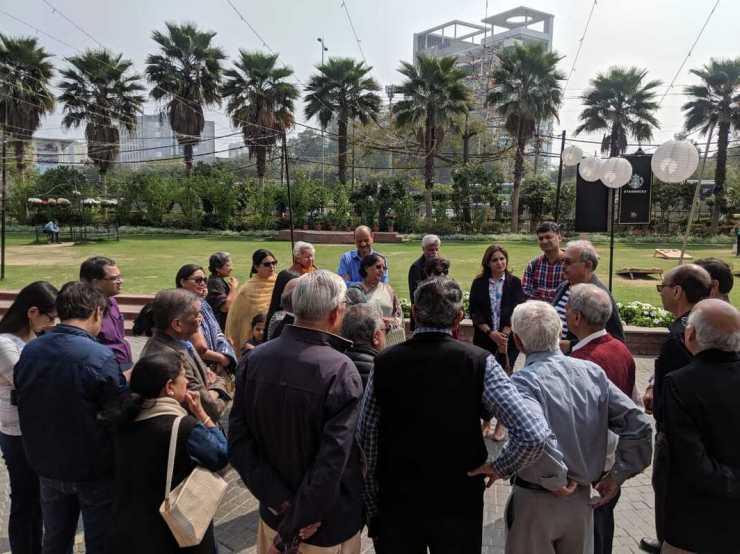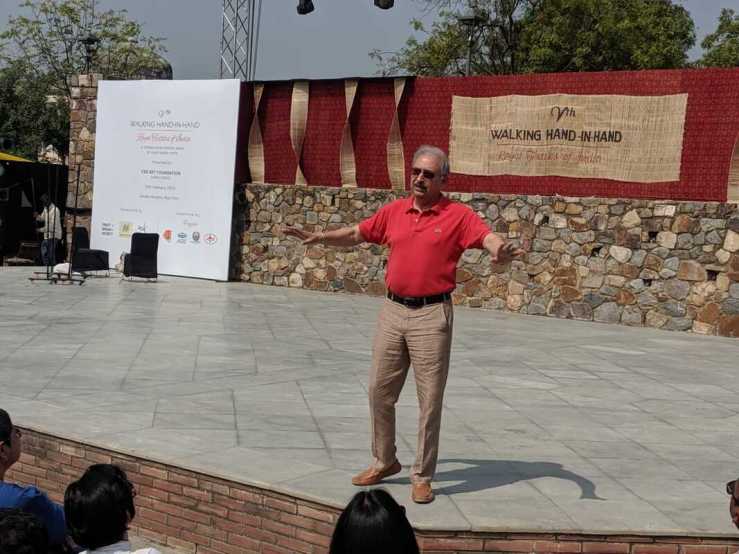
PURPOSE: This group aims to empower its members to get off all chronic medications by educating them on plant-based whole food (PBWF) and Intermittent fasting (IF) lifestyle.
DISCLAIMER: None of the content in my posts should be taken as medical advice. It should not be used as a substitute for professional medical care or treatment. I am not a doctor, and if you decide to implement any strategy, protocol, or therapy discussed in my posts, you do it on your own risk. It would be best you do it under the supervision of a qualified physician or healthcare professional.
______________________________________________________

•••• Diet & Lifestyle ••••
Guidelines
1. No animal food. No Sea food. No eggs. No milk or milk products.
2. No refined or processed foods. No Ghee, Oil or Sugar. If one is on no chronic medications then two tsp. of ghee/oil and two tsp. of sugar maximum allowed per day.
3. Eat from all five food groups: fruits, vegetables, grains, legumes and nuts& seeds (spices are recommended).
4. Eat a minimum of 1% of your body weight in fruits every day. Include one cup of berries.
5. Eat a minimum of 1% of your body weight in vegetables (at least half of those in green leafy) every day.
6. For Omega-3: Eat 1 tbsp. Flaxseed (ground) and five walnuts every day.
7. Take vitamin B-12 supplement. Vitamin D-3 supplement only if you are deficient and you don’t get in the sun much.
8. Keep your body hydrated at all times. Drink minimum 1/2 liter warm water first thing in the morning before brushing your teeth. Eat your water as much as possible (from fresh fruits and vegetables).
9. Start Intermittent Fasting. Slowly reduce your eating window to 8 or even 6 hrs.
10. Do extended, water only, fast of 3-5 days twice a year.
11. Walk 10,000 steps or more every day.
12. Love your family and friends unconditionally and stay connected.
13. Pray regularly and have a positive attitude full of gratitude.
14. No other restrictions. Eat variety; everything you like and some of what you don’t like. Eat as much as you feel like. No portion control is necessary. Your body knows when to stop

••• FOOD MYTHS •••
As we grow from a 2 year old child who has just been weaned, we are exposed to foods that our parents and/or grand parents thought was healthy. The information they inherited from their parents or acquired through education or through media or through interactions with their doctors. The doctors in their education learn a lot about diseases and medicines but are not taught much about nutrition. In US, medical college provides less than few hours of lectures on the subject of nutrition. The result is often blind leading a blind.
There are many myths about nutrition and there are lot of vested interests in propagating these myths.
Some common myths about food are :
1. Everything in moderation is good.
2. You can wait to change your diet.
3. Exercise can make up for unhealthy diet.
4. A little bit can’t hurt.
5. If a little is good, more is better.
6. One should eat more protein. Protein builds muscles.
7. Carbs are fattening. Low carb diets are healthy.
8. Carbs raise insulin level while protein lowers it.
9. Cow’s Milk is the best source of Calcium.
10. Calcium is what makes your bones strong.
11. You need to eat meat for iron.
12. Chicken is healthier than Beef or mutton meat.
13. Fish have good fat. Fish or fish oil is your best source for Omega-3.
14. Grilling Animal food makes them healthy.
15. A glass of Red Wine is good for you.
16. Artificial sweeteners are good for diabetics and overweight people.
17. We should dissect our food into protein, fat, carbs, vitamins and minerals and monitor their consumption.
Please watch UCSF Professor Dr. Janice Stanger’s Utube video on the subject.
After each blog, you are welcome to fill out the comments section in a variety of ways, as shown below. This section allows the readers to participate in expressing their opinions:
1) Your name followed by a question;
2) Title and name followed by a short article. This article does not require any reply but other people can comment on this article;
3) Question and your name followed by an answer by the same person, and;
4) Several persons can reply to any issue. These are just a few examples. There could be many other ways to express in the comments section. 👇
A happy man or woman is a compassionate person, has a pleasant character with spiritual knowledge grounded with intelligence, understands the universal order as to how the humans are living interdepend on each other. He or she always tries to make correct decisions, is a teacher and a leader, and works to enhance happiness in the world further.
To become a happy person is to remain in a state of learning, in the pursuit of knowledge and in seeking truth to benefit others. It requires a life of seeking truth and upholding firm ethical principles like non-violence, non-attachment, humility, and truthfulness in making decisions.
______________________________________________________
Ashok
6/21/2020 09:48:28 am
Hello Lalit - has there been any earlier discussion on how best to address the situation of a low ‘good’ cholesterol number (HDL)? My apologies if I have missed them. My HDL has been consistently low and has become below a healthy range. I don’t smoke, exercise regularly (3.5 to 4 miles of brisk walks every day), and my diet is vegetarian. No eggs over the past six months? I am on BP and Cholesterol medications. Discussions with my doc and Internet reading suggest that it is necessarily hereditary. Any suggestions, please?
Reply
Lalit
6/21/2020 09:51:51 am
If you are still on BP and cholesterol medication, you are not following the recommendations in this group. Most members of my groups get off these drugs within a month or two. When you follow all the guidelines, HDL goes up naturally. It is flawed to blame your genes for your troubles; they only load the gun; you still have to pull the trigger. The whole science Epigenetics is about that only. In simple words, it is called gene expression, which is in an individual’s control and is determined by diet and lifestyle.
Reply
How Apple Cider Works? Umesh
6/21/2020 09:53:39 am
Apple cider vinegar is used for obesity, diabetes, problems related to hair and skin, and other conditions, but there is no good scientific evidence to support these uses.
Apple cider vinegar is the fermented juice of crushed apples. It contains acetic acid and nutrients such as B vitamins and vitamin C. Apple cider vinegar might help lower blood sugar levels in people with diabetes by changing how foods get absorbed from the gut. Apple cider vinegar might prevent the breakdown of some foods.
Reply
What is bisphenol A and what does it do? Umesh
6/21/2020 09:55:47 am
Bisphenol A, or BPA, is a synthetic, estrogen-like substance that is found in polycarbonate plastic and epoxy resins. Polycarbonate plastic is hard and clear, and is used in many reusable food and beverage containers, and epoxy resins are used to line metal cans.
Although there is no conclusive proof that ingesting small amounts of BPA can adversely affect human health, studies have implicated low levels of BPA exposure in aggression, hyperactivity, breast cancer and early puberty in lab animals.
Reply
Ashok, K
6/21/2020 06:57:29 pm
Lalit, Please repeat the right constituents of *green juice*. Earlier I used to take green juice on and off, like regularly irregular. But last a few weeks all of us now take it almost daily, have experienced gas with green juice. Please help..
Reply
Lalit
6/21/2020 07:10:29 pm
People who are suffering from kidney stones or CKD stage 4 or on dialysis should not overdo on green juice, especially spinach, chard, or beetroot greens.
Reply


All
Make My Health Cat#1
Make My Health Cat#2
Make My Health Cat3
WhatsApp Catagory 1
WhatsApp Category 2
1. INTRODUCTION
1.10 CONFLICTING VIEWS
1.11 DOCTORS & DIETICIANS are not NUTRITIONISTS
1.12 REDUCE MEDS BEFORE PBWF
1.13 STOMACH ISSUES ON PBWF
1.14 BETTER SAFE THAN SORRY
1.15 MANY REASONS FOR PBWF
1.16 BLUE ZONES
1.17 FIVE PILLARS OF HEALTH
1.1 HUMAN EVOLUTION
1.2 WHAT IS A PBWF DIET ?
1.3 WHOLE vs PROCESSED
1.4 REDUCING MEDICATIONS
1.5 HEALTHY vs UNHEALTHY
1.6 ONE DIET FOR ALL ILLS
1.7 CHANGES: BIG & SMALL
1.8 EVERYTHING IN MODERATION
1.9 ANECDOTAL EVIDENCE
=============================
2. PILLAR-1: FOOD
2.10 HOW DO I GET CALCIUM ?
2.11 GLUTEN; Is it Unhealthy?
2.12 SOYA OR NOT ?
2.13 BEST SWEETENERS
2.14 ORGANIC vs INORGANIC
2.14 FRESH vs FROZEN
2.15 TEA OR COFFEE
2.16 SOME OBSERVATIONS
2.17 GREEN JUICING
2.18 TYPES OF GREEN JUICERS
2.19 RAW VS COOKED
2.20 BEST WAY TO COOK
2.21 CHOICE OF COOKWARE
2.22 FRESH vs LEFTOVERS
2.23 ACIDIC vs ALKALINE
2.24 HOW MUCH WATER ?
2.25 FOOD SUPPLEMENTS
2.26 OMEGA-3, ALA, DHA, EPA
2.27 HOW MUCH SALT ?
2,28 HERBS & SPICES
2.29 WHEN TO EAT
==============================
2. PILLAR-1: FOOD
2.1 FOOD
2.2 FOOD MYTHS
2.3 PROTEIN MYTH
2.4 DIET & LIFESTYLE GUIDELINES
2.5 Nutrients We Need
2.6 TYPICAL INDIAN MEAL PLAN
2.7 FIBER AS NUTRIENT
2.8 PROTEINS, FATS & CARBS
2.9 MILK & DAIRY PRODUCTS
==============================
3. PILLAR-2: DETOXING
3.1 DETOXIFICATION
3.2 MAJOR SOURCES OF TOXINS
3.3 TOXINS IN FOOD
3.4 GRAS & CRISCO
3.5 INTERMITTENT FASTING (IF)
==============================
4. PILLAR-3: EXERCISE
4.1 PHYSICAL ACTIVITY
4.2 HOW MUCH WALKING?
4.3 YOGA & PRANAYAMA
4.4 DIET OF YOGIC MASTERS
==============================
5. EMOTIONAL & SPIRITUAL HEALTH
5.1 EMOTIONAL & SPIRITUAL HEALTH
5.2 HAPPINESS CHEMICALS
5.3 PURSUIT OF HAPPINESS
5.4 YOGA
5.5 SEEKINGTHE TRUTH
=============================
6. BUSINESS & POLITICS OF HEALTH
6.1 CHRONIC DISEASES
6.2 LEADING CAUSES OF DEATH
6.3 DEATH BY MEDICINE
6.4 PLACEBO & NOCEBO EFFECTS
6.5 MODERN VS ALTERNATE MEDICINE
6.6 FLEXNER REPORT
6.7 WHAT IS NORMAL?
6.8 CONFESSIONS OF A PHARMA EXEC.
6.9 NNT, NNH & ADR OF DRUGS
6.10 FUNDING & BIAS IN RESEARCH
6.11 ANCEL KEY’S 7-COUNTRY STUDY
6.12 GOVERNMENT & MEDIA
==============================
7. CARDIO VASCULAR DISEASE
7.1 INFLAMMATION
7.2 CARDIO VASCULAR DISEASE
7.3 HYPERTENSION
7.4 CHOLESTEROL
7.5 HEART DISEASE
7.6 BLOOD THINNERS7.7 STROKE & CEREBROVASCULAR DISEASES
7.8 DEMENTIA & ALZHEIMER’S
7.9 ERECTILE DISFUNCTION
=============================
8. DIABETES
8.1 DIABETES TYPE-1
8.2 DIABETES TYPE-2
8.3 ACP REVISED GUIDELINES
8.4 IS INSULIN USE SAFE?8.5 DAWN PHENOMENA
8.6 GLYCEMIC vs INSULIN INDEX
8,7 ARTIFICIAL SWEETENERS
8.8 SUGAR: THE BITTER TRUTH
8.9 METABOLIC SYNDROME
==============================
9. CANCER
9.1 CANCER INITIATION
9.2 CANCER PROGRESSION
9.3 CANCER TREATMENT
9.4 CANCER IMMUNOTHERAPY
9.5 FAST MIMMICKING DIET
9.6 GERSEN THERAPY
==============================
10. OTHER DISEASES
10.1 C.O.P.D. , ASTHMA
10.2 CHRONIC KIDNEY DISEASE
10.3 LIVER DISEASES
10.4 AUTO IMMUNE DISEASE
10.5 ARTHRITIS
10.6 OSTEOPOROSIS10.7 PROSTATE HEALTH
10.8 GERD
==============================
11. MISCELLANEOUS
11.1 GENES VS ENVIRONMENT
11.2 ANTI AGEING
11.3 AGE REVERSING
11.4 WEIGHT GAIN: Why, How & When
==============================
12. RECIPES & MEAL IDEAS
12.1 GRADING FOODS & RECIPES
12.2 GREEN JUICE
12.3 MY OATMEAL RECIPE
12.4 LEMON-GINGER-HONEY M-PURP DRESSING
12.5 DATE AND NUT BURFI
12.6 CHIA SEED PUDDING
=============================
13. TESTIMONIALS
13.1 Ashok Golas
13.2 Mahendra P Singh (73)
13.4 SANGEETA SAXENA
13.5 B.B.SAXENA (70)
13.6 JAGMOHAN CHADDHA (80)
13.7 Krishann Ahuja
13.8 Dr. Brook Goldberg
13.9 Achala Rao
13.9 Som Soni
13.9 Vinay Khaitan
==============================
14. LIST OF DOCUMENTARIES TO WATCH
=============================
15. MY TEACHERS: DOCTORS TO FOLLOW
==============================
The 15 leading causes of death in 2017 were:
1. Diseases of heart (heart disease)
2. Malignant neoplasms (cancer)
3. Accidents (unintentional injuries)
4. Chronic lower respiratory diseases
5. Cerebrovascular diseases (stroke)
6. Alzheimer disease
7. Diabetes mellitus (diabetes)
8. Influenza and pneumonia
9. Nephritis, nephrotic syndrome and nephrosis (kidney disease)
10. Intentional self-harm (suicide)
11. Chronic liver disease and cirrhosis
12. Septicemia
13. Essential hypertension and hypertensive renal disease (hypertension)
14. Parkinson disease
15. Pneumonitis due to solids and liquids
TABLE OF CONTENTS
1. INTRODUCTION
1.1 Human Evolution
1.2 What is PBWF Diet
1.3 Whole vs Processed
1.4 Reduce Medications
1.5 Healthy vs Unhealthy
1.6 One Diet for All Ills
1.7 Changes: Big & Small
1.8 Everything in Moderation
1.9 Anecdotal Evidence
1.10 Conflicting Views & Videos
1.11 Doctors & Dietitians r wrong
1.12 Reduce Meds before PBWF
1.13 Stomach Issues on PBWF
1.14 Better Safe Than Sorry
1.15 Many Reasons for PBWF
1.16 Blue Zones
1.17 Five Pillars of Health
2. PILLAR-1: FOOD
2.1 Food
2.2 Food Myths
2.3 Protein Myth
2.4 Diet & Lifestyle Guidelines
2.5 Nutrition We Need
2.6 Typical Indian Meal Plan
2.7 Fiber as Nutrient
2.8 Protein Fat and Carbs
2.9 Milk and Dairy Products
2.10 Bow do I get Calcium?
2.11 Gluten: Is it Unhealthy
2.12 Soya or Not ?
2.13 Organic vs Inorganic
2.14 Fresh vs Frozen ?
2.15 Tea or Coffee
2.16 Some Observations
2.17 Green Juicing
2.18 Types of Green Juicers
2.19 Raw vs Cooked
2.20 Best Way to Cook
2.21 Choice of Cookware
2.22 Fresh vs Leftovers
2.23 Acidic vs Alkaline
2.24 How Much Water
2.25 Food Supplements
2.26 aOmega-3 ALA, DHA, EPA
2.27 How much Salt?
2.28 Herbs & Spices
2.29 When to Eat?
3. PILLAR-2: DETOXING
3.1 Detoxification
3.2 Major Sources of toxins
3.3 Toxins in food
3.4 GRAS and Cisco
4. PILLAR-3: EXERCISE
4.1 Physical Activity
4.2 How Much Walking
4.3 Yoga & Pranayama
4.4 Life of Yogic Masters
5. EMOTIONAL & SPIRITUAL
5.1 Emotional & Spiritual Health
5.2 Happiness Chemicals
5.3 Pursuit of Happiness
5.4 Yoga: To Join
5.5 Seeking the Truth
6. POLITICS OF HEALTH
6.1 Chronic Disease
6.2 Leading Causes of Death
6.3 Death by Medicine
6.4 Placebo and Nocebo Effect
6.5 Modern vs Alternate Medicine
6.6 Flexner Report
6.7 What is Normal?
6.8 Confessions of a Pharma Exec.
6.9 NNT, NNH and ADR of Drugs
6.10 Funding & Bias in Research
6.11 Ancel Key’s 7 Country Study
6.12 Government & Media
7. CARDIO VASCULAR DISEASE
7.1 Inflammation
7.2 Cardio Vascular Disease
7.3 Hypertension
7.4 Cholesterol
7.5 Heart Disease
7.6 Blood Thinners
7.7 Stroke
7.8 Dementia & Alzheimer’s Dis.
7.9 Erectile Disfunction
8. DIABETES
8,1 Diabetes Type-1
8.2 Diabetes Type-2
8.3 ACP revised Guidelines
8.4 Is Insulin Safe?
8.5 Dawn Phenomena
8.6 Glycemic Index vs Insulin Index
8.7 Artificial Sweeteners
8.8 Sugar: The Bitter Truth
8.9 Metabolic Syndrome
9. CANCER
9.1 Cancer Initiation
9.2 Cancer Progression
9.3 Treating Cancer
9.4 Immunotherapy
9.5 Fast Mimicking Diet
9.6 Gersen Therapy
10. OTHER DISEASES
10.1 COPD and Asthma
10.2 Chronic Kidney Disease
10.3 Liver Diseases
10.4 Auto Immune Disease
10.5 Arthritis
10.6 Osteoporosis
10.7 Prostate Health
10.8 GERD
11. MISCELLANEOUS
11.1 Genetics vs Epigenetics
11.2 Anti Aging
11.3 Age Reversing
12. RECIPES & MEAL IDEAS
12.1 Grading Foods & Recipes
12.2 Green Juice
12.3 My Oatmeal Recipe
12.4 Lemon, Ginger, Honey Dressing
12.5 Date & Nut Desserts
12.6 Chia Seed Pudding
13. TESTIMONIALS
13.1 Ashok Golas (69)
13.2 Mahendra P. Singh (73)
13.3 Pradeep Agarwal (62)
13.4 Sangeeta Saxena (39)
13.5 B.B.Saxena (70)
13.6 Jagmohan Chaddha (80)
13.7 Krishan Ahuja (71)
13.8 Dr. Brook Goldner
14. DOCUMENTARIES TO WATCH
15. DOCTORS TO FOLLOW